Claire Mabey – 13 November, 2014
What might be mundane, common, even repulsive is made unique, rare and beautiful. Detail gathers detail until an entire microcosm is contained. It is this ability to create these miniature worlds where hierarchies are neutralized and inequalities subverted that Pataka displays so well. Walking through, we understand the progression of Madden's ‘sculptography' and the increasing relevance of his methodology.
Porirua
Peter Madden
Coming from all the places you have never been
Curated by Helen Kedgley
31 August - 23 November 2014
An image of a tiny elephant - painted with the galaxy - given the wings of a moth, and encased in a glass box alongside other fantastic fusions of the plastic/paper organic, has remained one of the more outstanding images from any exhibition I’ve seen.
That elephant was a very small element amongst many making up Peter Madden: Escape from Orchid City at City Gallery in 2007. The installation took over the gallery so entirely that the place took on an environment of magic realism - it felt as though we were entering the world of Peter Madden, and not that of a gallery that was a temporary vehicle for the work. And it is a world that lingers in the mind, anchored by, and also transcending beyond, the many cultural references and influences apparent in each intricate piece.
Coming from all the places you have never been is a survey of Madden’s work over the past decade. The survey structure has an impact on the experience of the work, the sense of curatorial strategy and placement achieving a very different effect compared to the 2007 installation, one that prickles and bursts with the depths, dichotomies and detail of an artistic practice that has developed in complexity and poetics over time.
The start of the exhibition is a delightful re-entry into the startling detail of Madden’s world, especially the remarkable flies (from Lord of the Flies 2007-2014) that adorn the painted title of the show. They immediately anticipate an entrance into Madden’s fusion of organic and mechanical and can be seen as a metonym for his aesthetic as a whole: what might be mundane, common, even repulsive is made unique, rare and beautiful. Detail gathers detail until an entire microcosm is contained.
It is this ability to create these miniature worlds where hierarchies are neutralized and inequalities subverted that Pataka displays so well. Walking through, we understand the progression of Madden’s ‘sculptography’ and the increasing relevance of his methodology. Of his use of found materials (his well-known resourcefulness with National Geographic magazines, dead flies, animal skulls, old shoes), Madden says: ‘I reuse and make my work with a simple economy of resources - no special technologies are involved. Everyone can do it. I see my role as an artist as creating a different economy out of society’s detritus’.
Collage, in 2D and 3D, is the craft on display. There is no way that ‘anyone can do’ what Madden has achieved, but there is an element of familiarity with his choice of material and subject that lets us in on it. The works A Woman’s Past and A Man’s Past from 2012 are the only entirely monochrome pieces and are the most somber of the collection. Their abstraction is Braque-like but the collage pulls together carefully selected found imagery for an explosion of references. The natural world clusters in a frenzy around both man and woman, giving us Madden’s uniquely tactile impression of founding mythology.
Crouches with Moths (2010) is a startling, earlier iteration of the 2D busts: a black human skeleton surrounded by a crowd of bright moths. The 3D collage is a poetic portrayal of life cycles, for in Madden’s work human remains support the living natural world. Nothing is wasted, everything plays a part. Secret of Ants (2011) further extends the magic-realism of this trajectory: a hand-gilded pre-fabricated skeleton glistens inside a white cage. Planets, insects, flowers and lines of text cradle the skull and endow the little skeleton with the qualities of a jewel. Here Madden puts us in our place: we are only curiosities as mundane and as fascinating as the smallest of creatures we share the planet with.
Madden’s influences are some of the greatest artists and thinkers from the past (the Pataka catalogue cites a rich web of philosophers, writers, and artists) where his aesthetic takes the familiar and the known into realms of magic realism that appeal across layers of society. He manages to fold human nature - with all of its destructive powers - into the supremely delicate systems of nature and science to create material that is both dense (in terms of layers of meaning) and decorative. He makes images of human detritus magical and beautiful by aesthetically re-arranging them in collage, sculpture, and Perspex boxes. The latter works in the exhibition reflect a growing consideration of complete eco-systems and the fragility of one life-form’s dependence on all of those in the chain before and after them.
Small Island Worlds (2014) thus provoke consideration of a system as circulatory, fragile and hovering alone. Madden’s miniature worlds resonate with increasing concern over human impact on the environment and even on the impact on such stress on human nature itself. Madden’s work oscillates back and forth between a delight in man and nature (Leave, 2004) and an awareness of the dark consequences of man’s impact on nature (The Leaving, 2008).
‘There’s a seriousness to what I do, but I always downplay it’, says Madden. It is this seriousness that Helen Kedgley has allowed to emerge through her curation of Coming from all the places you have never been. What lingers in the mind after leaving the gallery is exquisitely pleasurable, but it is darkly shrouded by the fragility of a natural world that contains human nature, accompanied by explosive energies that can shatter and move whole systems.
Claire Mabey
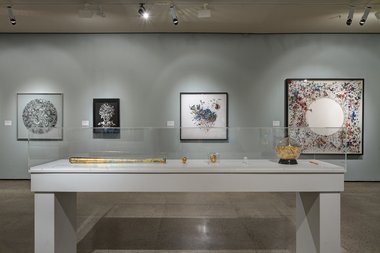
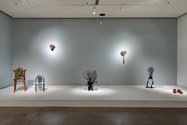
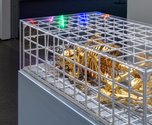
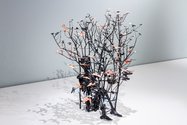
 Two Rooms presents a program of residencies and projects
Two Rooms presents a program of residencies and projects Advertising in this column
Advertising in this column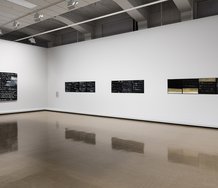
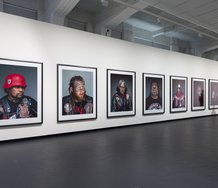
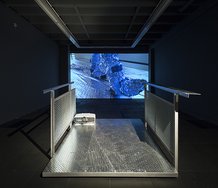
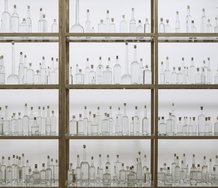
This Discussion has 0 comments.
Comment
Participate
Register to Participate.
Sign in
Sign in to an existing account.